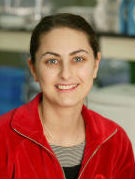Inducible costimulator is required for type 2 antibody isotype switching but not T helper cell type 2 responses in chronic nematode infection Journal Article
| Authors: | Loke, P.; Zang, X.; Hsuan, L.; Waitz, R.; Locksley, R. M.; Allen, J. E.; Allison, J. P. |
| Article Title: | Inducible costimulator is required for type 2 antibody isotype switching but not T helper cell type 2 responses in chronic nematode infection |
| Abstract: | Inducible costimulator (ICOS) has been suggested to perform an important role in T helper cell type 2 (Th2) responses, germinal center formation, and isotype switching. The role of ICOS in chronic Th2 responses was studied in a nematode model with the filarial parasite, Brugia malayi. Contrary to expectations, we did not observe a significant defect in IL-4-producing Th2 cells in ICOS-/- mice or in eosinophil recruitment. We also found that ICOS was not required for the differentiation of alternatively activated macrophages (AAMΦ) that express Ym1 and Fizz1. Although the production of IgE was slightly reduced in ICOS-/- mice, this was not as significant as in CD28-/- mice. In contrast to live infection, the primary response of ICOS-/- mice immunized with soluble B. malayi antigen and complete Freund's adjuvant resulted in significantly fewer IL-4-producing cells in the lymph nodes. As previously reported, we observed a defect in antibody isotype switching toward the IgG1 isotype in ICOS-/- mice during live infection. Interestingly, there was a significant enhancement of parasite-specific IgG3 isotype antibodies. CD28-/- and MHC class II-/- mice also had enhanced parasite-specific IgG3 isotype antibodies. Our results suggest that ICOS is not required to maintain a chronic cellular Th2 response. The primary role of ICOS in a chronic helminth infection could be to drive antibodies toward type 2 isotypes. T-independent antibody response to the parasite could be enhanced in the absence of costimulation and T cell help. © 2005 by The National Academy of Sciences of the USA. |
| Keywords: | controlled study; unclassified drug; nonhuman; flow cytometry; polymerase chain reaction; cell proliferation; proteins; animal cell; mouse; animals; mice; mice, knockout; allergy; interleukin 4; animal experiment; animal model; inflammation; enzyme linked immunosorbent assay; mice, inbred c57bl; rna; th2 cell; antigen presentation; immunoglobulin g; major histocompatibility antigen class 2; antibody response; cytokine production; effector cell; real time polymerase chain reaction; immunoglobulin g1; immunoglobulin g3; immunoglobulin class switching; enzyme-linked immunosorbent assay; vermes; macrophage; macrophages; t lymphocyte activation; cd28 antigen; b7 antigen; immunoglobulin e; th2 cells; costimulation; interleukin-4; antigens, differentiation, t-lymphocyte; eosinophil; inducible costimulator; freund adjuvant; ige; nerve growth factor; fluorescence activated cell sorter; lectins; immunoglobulin class; brugia malayi; nematodiasis; beta-n-acetylhexosaminidase; helminth; parasite antigen; protein icos; peritoneal exudate cell; nematode infections |
| Journal Title: | Proceedings of the National Academy of Sciences of the United States of America |
| Volume: | 102 |
| Issue: | 28 |
| ISSN: | 0027-8424 |
| Publisher: | National Academy of Sciences |
| Date Published: | 2005-07-12 |
| Start Page: | 9872 |
| End Page: | 9877 |
| Language: | English |
| DOI: | 10.1073/pnas.0503961102 |
| PUBMED: | 15994233 |
| PROVIDER: | scopus |
| PMCID: | PMC1175004 |
| DOI/URL: | |
| Notes: | --- - "Cited By (since 1996): 13" - "Export Date: 24 October 2012" - "CODEN: PNASA" - "Source: Scopus" |
Altmetric
Citation Impact
BMJ Impact Analytics
Related MSK Work






